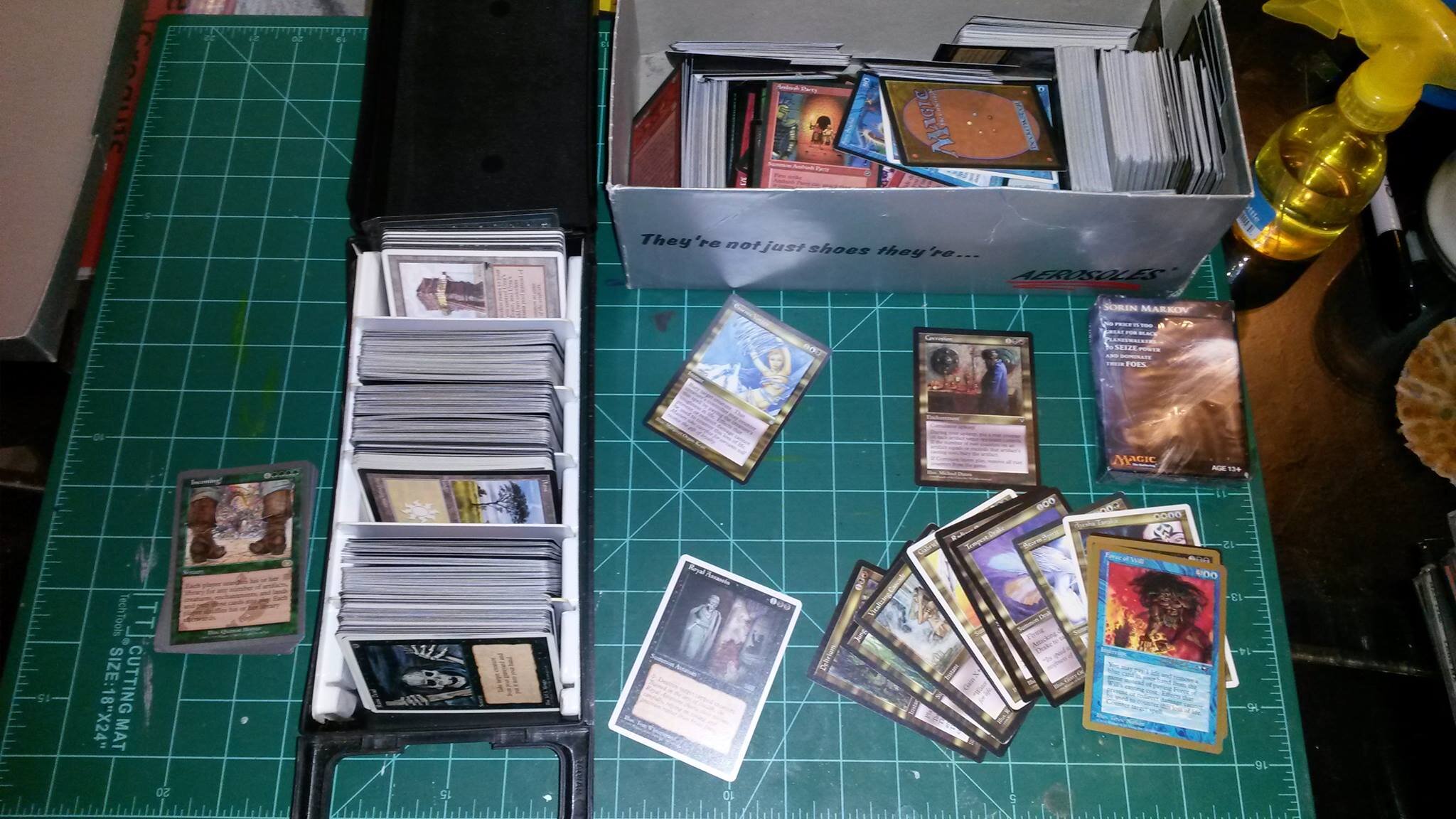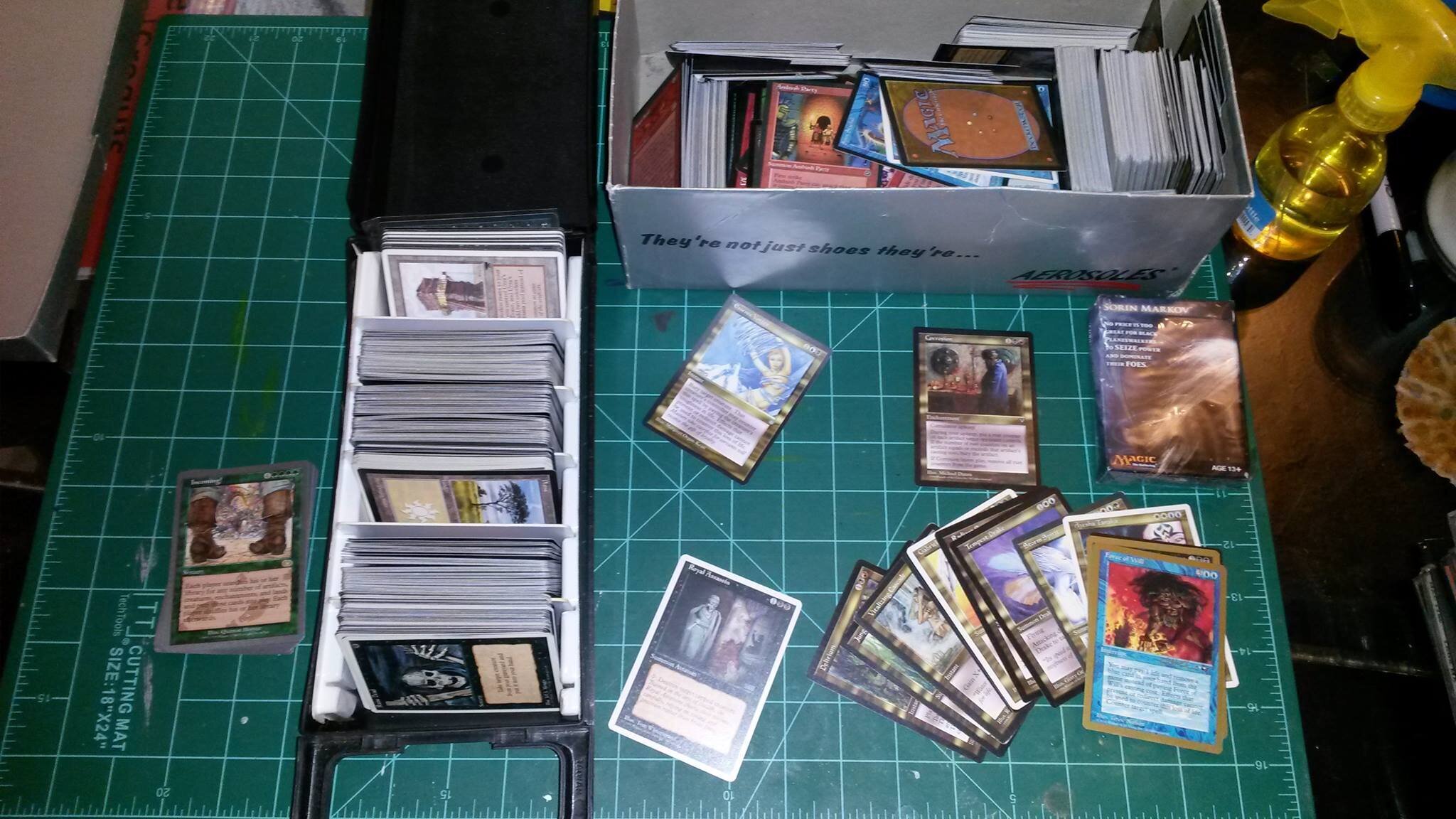Digging for Gold & Finding Diamonds

A strange and protracted chapter in the history of my involvement in the gaming hobby came to an end yesterday. For the first time in 20 years, I no longer own any Magic: The Gathering cards.
The decision to sell off my collection of M:tG collection has been a long time coming. The two boxes of collectible cards - one a reperposed cardboard box for a brand of sneakers no longer in production and the other a sleek plastic case customized with a colored circular sticker filled in with my own hand-drawn reproduction of the green mana symbol - have sat fallow near my drawing table for almost seven years, always within reach. I held on to these cards long after my interests and petty cash went elsewhere. The artwork on these cards, particularly the illustrations produced by Phil and Kaja Foglio, were among my first artistic influences. Looking back, I realize the elegant design of the game influenced my own thoughts on game design and theory. The introduction of rules such as Phasing and Buyback influenced my development as a designer as well, though in a contrary fashion as I prefer elegant simplicity to needlessly complex mechanics. And I'll always remember Unglued fondly. I rank it among the "Black Dog Game Factory" chapter of Subsidiaries: A Guide to Pentex as one of the finest examples of self-parody within the hobby.
I drifted away from M:tG around the same time I drifted away from high school and toward college. My focus was on RPGs and the academic deconstruction of visual storytelling techniques. But I still played, if only twice and year and with increasingly outdated cards and strategies. Not that strategy was my strong suit within the game. I build decks for theme and flavor, and as a result most of my experiences with the game ended with losses. However, unlike my first experiments with tabletop wargaming, I found camaraderie and good sportsmanship within M:tG that made each loss a pleasant learning experience. It was a good fellowship I have yet to rediscover in the world of collectible card games, though I try every few years.
I held on to my cards as long as I did because long after I stopped playing the game the artwork was still and endless font of inspiration (and to this day I consider it a travesty that Wizards of the Coast have releases few compilations of its best and most iconic artwork). I even attempted to recycle my cards in RPGs, using Lands and Creatures to deal random environments and encounters to my players. But now the internet has mad the card artwork accessible without having to search through two boxes of cards, and my time as a professional game designer has taught me that more than anything, games are meant to be played. There are other players more worthy of these cards than I, and they'll do more good in the hands of players than an artist in need of a quick elf reference.
I was happy when I walked into the doors of my local game store, the resurrected and revitalized Moonlite Comics in Frankfort, KY. My cards were going to a good home. Possibly several once they entered the resale market. I had one last look at the thrilling artwork, the combos, and the game, knowing I'd likely walk out of the store with $20 and an empty shoebox.
My M:tG collection was never particularly valuable. The last time I'd checked (in 1998) the most collectible card in my deck was an old Ice Age edition Jester's Mask, which was worth around $47 dollars in 1990s money. I played for the fun and the art and just didn't buy enough packs or make the right trades to end up with the in-demand cards. But history is a funny thing. Buried in my set was the mythic rare artifact Lion's Eye Diamond with artwork by Margaret Organ-Kean*. When I last played with this card it was rare but worthless, it's ability risking that most frustrating of all rules, mana burn†. However, the game has changed since then, and the card that nobody wanted in the 90s is in high demand now due to its ability to fuel a number of combos I never would have thought of. I'm happy to say that Jay, proprietor of the shop, dealt me fair. He explained the value of the card and the history behind that value, then made me an offer that was beyond generous. I walk away with cash in pocket, and line of store credit, and a sourcebook for a game I'll cover in a future blog post. I tossed the shoebox and gave Jay the sleek plastic case as a bonus.
I never considered my M:tG collection to be an investment, but it paid off, and it'll fuel any number of future gaming endeavors. And the cash bought me two thick sirloin steaks, which if my bride's assessment is anything to go by, was the best meal of our married lives. A Lion's Eye Diamond was this gamer's best friend.
*In the original version of this article the artwork for Lion's Eye Diamond was improperly attributed to Lindsey Look, who was the illustrator for the version of the card used in Magic Online. I'd like to thank commenter wookiees for bringing this oversight to my attention.
†It has come to my attention that mana burn was retired from M:tG in 2010.



